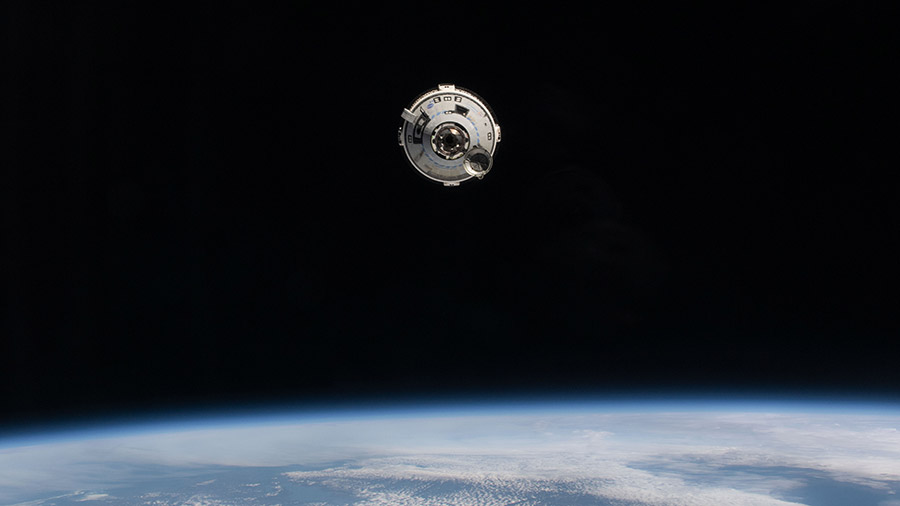
The Expedition 71 crew members packed a U.S. cargo craft, cleaned up the International Space Station, studied futuristic piloting techniques, and conducted eye exams on Friday. NASA’s Boeing Crew Flight Test astronauts spent the end of their workweek reconfiguring a space botany facility.
Robotics controllers are scheduled to detach the Cygnus space freighter from the Unity module on July 12 and release it into Earth orbit for disposal over the South Pacific Ocean ending a five-and-a-half-month mission at the orbital lab. NASA Flight Engineer Matthew Dominick spent most of Friday loading trash and discarded gear inside the Cygnus with assistance from fellow NASA astronauts Jeanette Epps and Tracy C. Dyson. Cygnus was captured by the Canadarm2 robotic arm on Feb. 1 with over 8,200 pounds of science experiments and crew supplies.
At the end of the day, Epps operated standard medical imaging gear found in an optometrist’s office on Earth and peered into Dyson’s eyes. She examined Dyson’s cornea, retina, and lens to help flight surgeons understand and counteract microgravity’s effect on crew vision.
Earlier, Dyson collected and stowed excess space station hardware for disposal. Epps spent her morning inside the Kibo laboratory module troubleshooting an airflow sensor then reorganizing the JAXA (Japan Aerospace Exploration Agency) module for upcoming cargo operations.
NASA Flight Engineer Mike Barratt started his day routing cables and reprogramming communications systems inside the Columbus laboratory module. In the afternoon, he stowed hardware and components used earlier in the week for advanced orbital plumbing in the Tranquility module’s bathroom. Afterward, Barratt refilled supply kits in Columbus’ two Human Research Facility racks with biomedical gear including sample tubes and needles.
Starliner’s Commander and Pilot, Butch Wilmore and Suni Williams, partnered together inside Kibo on Friday for space botany work. The duo removed the Plant Habitat growth chamber from Kibo’s EXPRESS rack, replaced its camera and carbon dioxide sensors, then reinstalled the research device. The Plant Habitat has enabled the growth of small crops of lettuce, tomatoes, and more in microgravity for both research and consumption.
NASA and Boeing continue to evaluate Starliner’s propulsion system performance before returning to Earth from the orbiting lab. NASA and Boeing leaders participated in a media teleconference today to discuss Starliner and station operations.
NASA is now targeting the end of July for the next spacewalk outside the space station. This change allows teams on the ground to continue to troubleshoot and understand the water leak in the service and cooling umbilical unit that forced an early end to a spacewalk on Monday, June 24.
Working in the Roscosmos segment, Flight Engineer Nikolai Chub started his day practicing planetary spacecraft and robotic piloting techniques future crew members may use. Afterward, he conducted two sessions of an investigation exploring ways to create new materials on the lunar surface. Flight Engineer Alexander Grebenkin worked throughout the day inventorying medical kits and cleaning fans inside the Rassvet module. Finally, Station Commander Oleg Kononenko replaced thermal components inside Roscosmos’ life support hardware.
Learn more about station activities by following the space station blog, @space_station and @ISS_Research on X, as well as the ISS Facebook and ISS Instagram accounts.
Get weekly video highlights at: https://roundupreads.jsc.nasa.gov/videoupdate/
Get the latest from NASA delivered every week. Subscribe here: www.nasa.gov/subscribe

